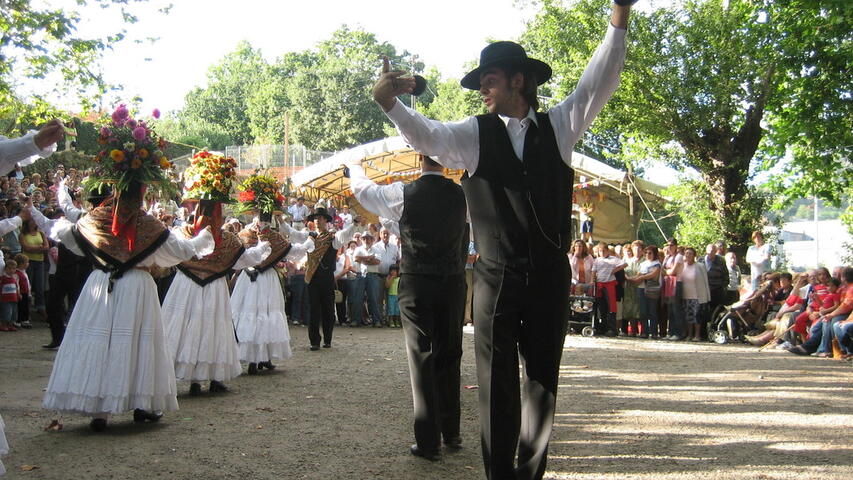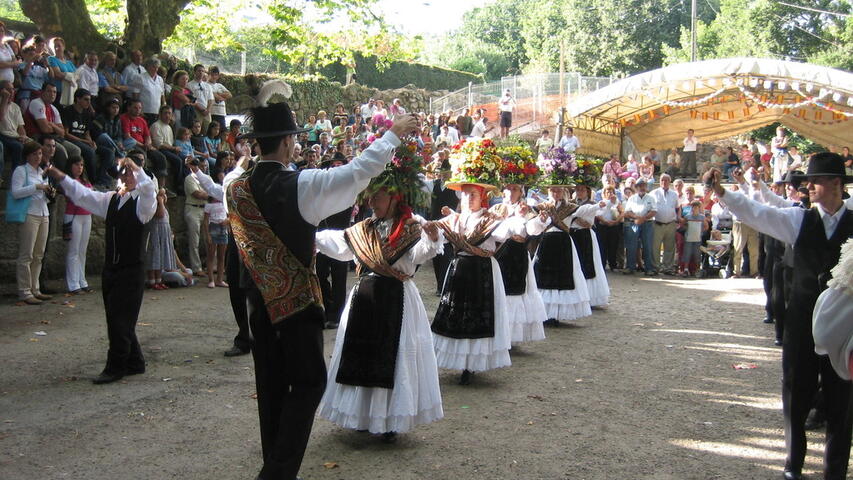Darbo ancestral dances
Dance in honour of St. Mary of Darbo
Together with Aldán and Hío, they are the three parishes of Cangas that preserve this tradition.
If in January the Dance of San Sebastián is celebrated in Aldán and in August the Dance of San Roque in O Hío, in September it is the turn of the Dance and Contradance of Darbo. Unlike the first two, this is a dance entrusted to the patron saint of the parish, Santa María de Darbo.
The Danza and Contradanza of Darbo is a celebration that was not performed for a long time, until neighbours of the parish, with the aim of recovering old customs, began to look for a way to recover this dance. The task was not easy because there was a great generation gap. Fortunately, thanks to the historical documentation in the archives, some photographs and the location of an old dancer, they managed to rescue this piece with several centuries of history.

Today it is a tradition that is passed down from father to son, one of the oldest dances not only in Pontevedra, but in Galicia. It is held after a solemn mass and after the conclusion of the procession. Ten gallants and five ladies perform the Danza y Contradanza in front of the church, which, unlike what happens in O Hío, is also performed by women. Those who take part are accompanied by a guide to the beat of a piper and a drummer.
By popular demand, the performance is repeated in the afternoon for those neighbours who were unable to attend the first date. Thus, from seven in the evening and after mass, the Danza y Contradanza is repeated, which usually lasts the same as the previous one, around 45 minutes.
Dress
In terms of dress, the men wear feathers in their hats and wear earrings. While some consider it to be a symbol of wealth, others maintain that it comes from when men had to replace women because of the Church's veto.
As for the women, who dress in shirts, petticoats and skirts with wide laces, their shawls and hats made of natural flowers (unlike the hats of the Danza de O Hío), which they make themselves a few hours beforehand to keep their colour alive, are particularly noteworthy.
Festivities
As for the rest of the festivities, the opening speech and the chupinazo take place on the evening of the 6th; in the previous edition they were accompanied by a popular queimada. The following day, fireworks, a verbena and orchestras liven up the fiesta. The 8th is the most special day, with two sessions of the Danza and Contradanza, in the morning and in the afternoon. A final solemn mass and procession are held on the 9th and the festivities end that same night with the verbena.
To see and visit
The region of O Morrazo is one of the most beautiful areas of As Rías Baixas, with extraordinary beaches such as A Costa da Vela, Melide, Nerga or Liméns, where you can walk to Cabo Home or to the lighthouse of Punta Robaleira. On the opposite side are the beaches of Menduíña and Areabrava, among others. The Monte do Facho viewpoint and the castro that stands there have enviable views. We also recommend a walk and a visit to Cape Udra, a little more remote but well worth it.

